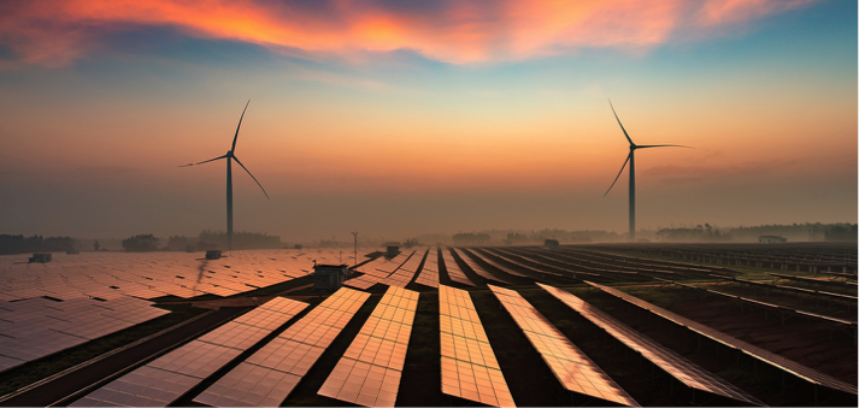The words “perfect storm” and “tsunami” get overused in business writing, so I won’t mention them again here, but I can’t overemphasize what a unique moment we are in today in retail electricity and natural gas markets, the ones that directly affect commercial and industrial (C&I) energy buyers. If your company buys energy to power its operations, this is one of the best times in history to make that purchase.
Put another way, at this moment of great global economic uncertainty, the opportunity to save money on your next energy purchase – dollars that directly impact the operating line of your balance sheet – couldn’t be more certain. With this in mind, here are 5 things you should know about buying energy right now.
1. Historic Market Lows
Be it oil, natural gas, or electricity, energy right now is cheap. It doesn’t take a Ph.D. to see why, but it’s important to understand what is behind today’s low energy prices. It’s easy to point to the global economic slowdown caused by the Coronavirus pandemic as the primary driver of current market lows. That is certainly a factor. When economic activity is depressed, energy supply of all kinds increases – a simple supply and demand story that swings the balance of power to energy buyers.
But COVID-19 is only one dimension of the pressures being put on energy prices and energy suppliers. Long before the outbreak, years of fracking and natural gas abundance, combined with a massive shift from coal to natural gas generation of electricity, had driven prices down – way down. Add to that a warmer than average 2019-2020 winter season, and we’ve got an almost unimaginable glut of natural gas, a buildup of over 75% from just last year. All these market dynamics have been helping businesses lower their energy costs for the past several years and set the stage for today’s market. So, what do you get after years of falling natural gas and electricity prices, a warmer than average winter, and a global pandemic? A triple-whammy that may not be seen again in our energy-buying lifetimes, and an opportunity on which to capitalize.
2. Don’t Settle: Run a Competitive Procurement Process
When energy prices are at or near record lows across the U.S., it’s not hard to save money on your next energy contract. Smart incumbent suppliers, i.e., the ones with your current electricity or natural gas contract, will be proactive in trying to keep your business. There is nothing wrong with staying with your incumbent supplier, unless you don’t run them through a competitive process first. Experience shows again and again that incumbent suppliers will better their initial pricing offers, often radically, when they have to bid against other suppliers in a transparent, competitive procurement process.
Another aspect of competitive procurements that often is not apparent to C&I energy buyers is that energy suppliers all have different needs and pressures on them depending on their current power and natural gas holdings. Unless you run a competitive procurement event and, importantly, attract a variety of accredited suppliers that could potentially service your account, you’ll never know that national supplier X was eager to break into the New Jersey, Maryland, or Texas market, and would have been willing to sell below any other competitor.
For some real-time color on this, N.J.-based Viscofan Collagen USA recently ran a competitive procurement event, an online auction, that attracted 11 national electricity suppliers and 9 natural gas suppliers. The competition was fierce and yielded more than 400 bids that seamlessly compared various contract products and terms, delivering $500,000+ in savings for the manufacturer.
That’s real money that will make a real difference in the post-COVID-19 economy. That’s also the result of a real, technology-driven procurement process – not a paper-based broker working a couple of suppliers over the phone.
3. Know Your Supplier
One of the trickier aspects of buying energy now is knowing which suppliers to bank on. While natural-gas gluts and desperation pricing can prove a welcome windfall for energy buyers, they can be devastating to energy suppliers. Understand before signing on the dotted line which suppliers have the best balance sheets. Today’s enormous cost pressures on suppliers will likely precipitate industry consolidation. That doesn’t have to be bad news for you – a supplier that is acquired by another can still fulfill your contracted energy needs. Just be sure you are doing business with a reputable and financially stable provider.
4. Buy Now, Even if Your Current Contract Isn’t Close to Expiring
Many C&I energy buyers think they have to wait until their current energy contracts are close to expiring before looking to get back into the market. This is a mistake. Even if you have 12 or 24 months left on your current contract, you can take advantage of today’s historic low and lock in long-term gains for the future.
5. Go Long
The sweet spot of energy contracts, both electricity and natural gas, used to be 24 months. Once you tried to secure pricing beyond that point, you were typically looking at paying a sizable premium. That is not the case today. Suppliers want your business and are happy to offer contracts up to 60 months, and sometimes longer. Locking in sizable savings now for the long term will meet the business objectives of many companies looking hard for good news in the current economic climate.
Understanding today’s energy supply and pricing dynamics will help you secure your share of today’s record lows. Teaming with energy-procurement experts who can help you a) attract the best suppliers to your procurement event and b) run a technology- and process-driven procurement to heighten competition for your business will ensure that share is the best available in the market and supports your business goals.





